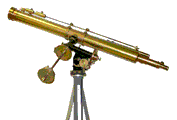Department of Physics and Astronomy: Publications and Other Research

M. Eugene Rudd Publications
Document Type
Article
Date of this Version
1997
Citation
Journal of Chem. Physics (1997) 106: 1,026
doi: 10.1063/1.473186
Abstract
A theoretical model for electron-impact total ionization cross sections, which has been found to be reliable for a wide range of molecules, is applied to molecules of interest to atmospheric science. The new theory, the binary-encounter-Bethe (BEB) model, combines the binary encounter theory and the Bethe theory for electron-impact ionization, and uses simple theoretical data for the ground state of the target molecule, which are readily available from molecular structure codes. Total ionization cross sections of 11 molecules, CS, CS2, COS, CH4, H2S, NH3, NO2, N2O, O3, S2, and SO2, are presented for incident electron energies from threshold to 1 keV with an average accuracy of 15% or better at the cross section peak. We also found that the use of vertical ionization potentials (IPs) rather than adiabatic IPs for the lowest IPs significantly improves BEB cross sections between the threshold and cross section peak for molecules whose adiabatic and vertical IPs are different by ~1 eV or more (CH4 and NH3). The BEB cross sections are presented in a compact analytic form with a small number of constants, making the cross sections suitable for modeling applications.


Comments
Copyright © 1997, American Institute of Physics. Used by permission